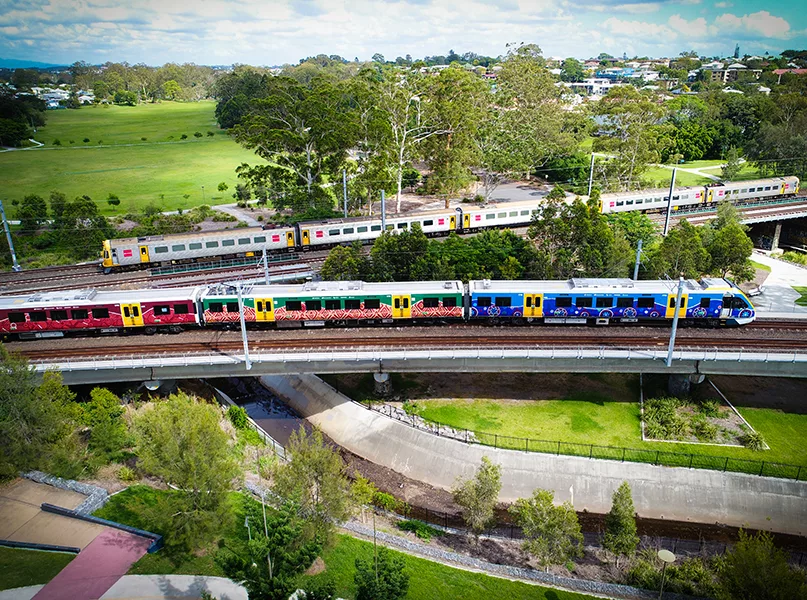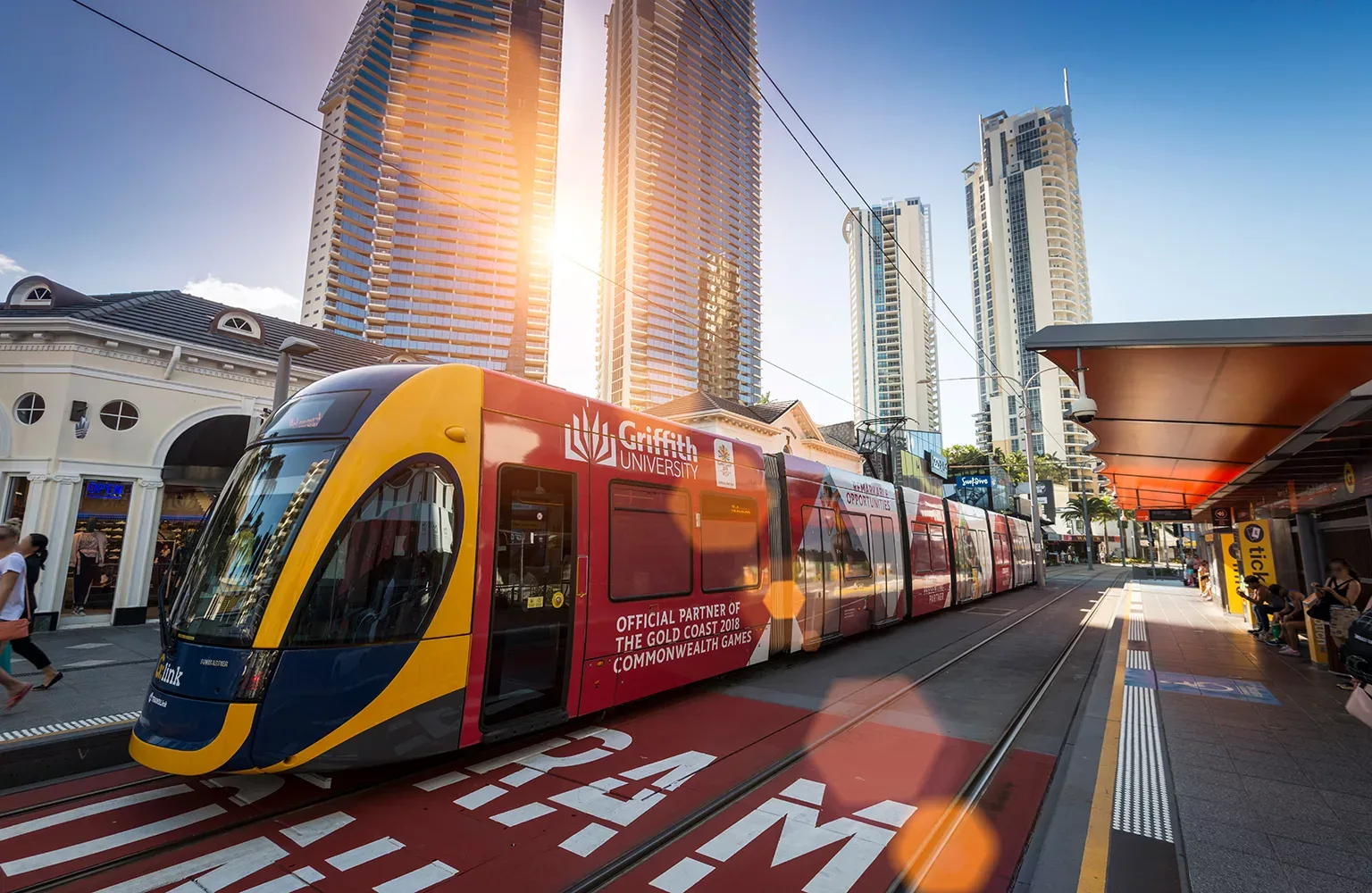JUST THE TICKET
Its public transport services include rail, bus, ferry, light rail, event transport, school transport, and long-distance rail, coach, and air routes.
“Our state-wide bus network alone has just under 3,000 urban routes that travel more than 160 million kilometres (km) annually, another 2,379 school services, and almost 18,000 stops,” reveals Milward.
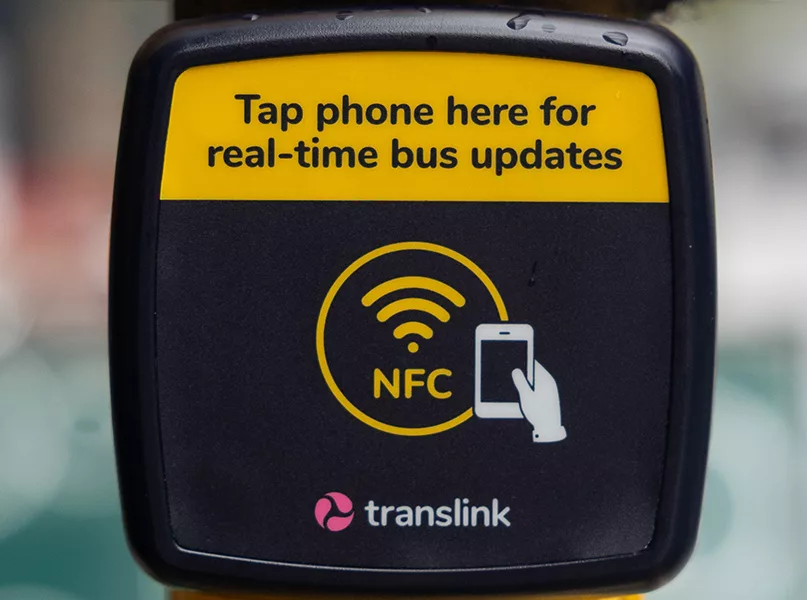
ACCESSIBLE TO EVERYONE
However, scale, geography, and the environment make integration and accessibility across all facilities and modes of transport a complex task.
“This challenge makes projects such as Smart Ticketing and delivering improvements for our customers even more rewarding,” Milward excites.
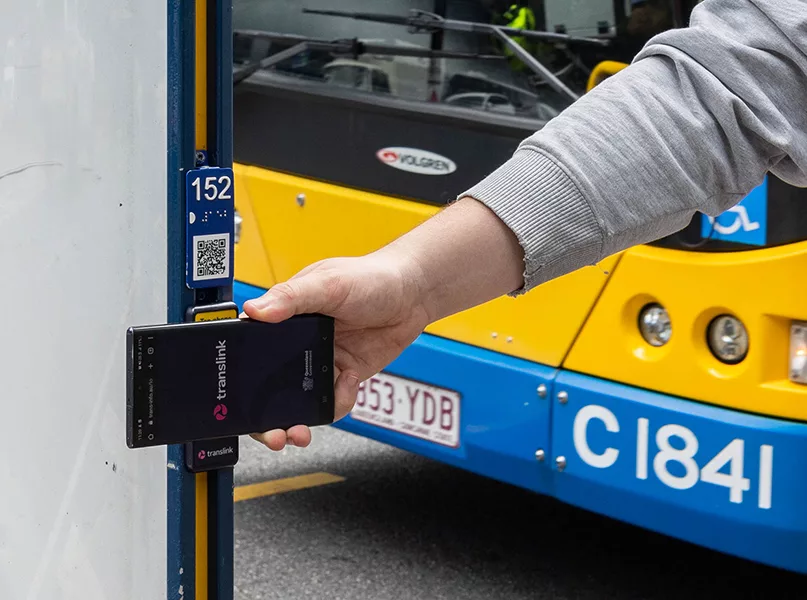
PROGRESSIVE PARTNERSHIPS
Translink works together with a number of delivery partners as well as state and local government agencies to help plan and deliver its services and public transport infrastructure.
“People and partners are the core of our business, and our customers have regular interactions with these partners,” Milward enthuses.
Translink’s delivery partners include 18 private operators contracted to provide regional urban bus services, alongside 22 public transport delivery partners operating services across Queensland, and more than 1,200 school bus service contracts.
Bus stops are jointly-funded with many of Queensland’s local councils, to plan and assist with the delivery of services and infrastructure requirements. This can include future planning and funding for public transport services in areas of development and building and upgrading bus stops.
“Customer interactions with our partners aren’t restricted to stepping on board a service. They may plan a journey or check service disruptions with our call centre partner, board at a jointly-funded transport terminal, use the ticketing system supported by our ticketing partner, visit an accessible station built by our infrastructure delivery partners, or engage with enforcement personnel such as our Queensland Police Service partners,” explains Milward.
“Consequently, we are heavily reliant on our partnerships.”
CREATING BETTER CONNECTIONS
Translink’s role in planning, delivering, and adapting its services in ways that benefit customers is driven by its 10-year plan, Creating Better Connections for Queenslanders.
The core components of this plan include developing safe and reliable services, responding to evolving community needs, implementing seamless end-to-end journeys and accessible passenger transport, and overseeing environmentally sustainable operations.
“While big ticket items often get the glory, we understand it is sometimes the smaller things that make the most appreciable difference for our customers,” Milward acknowledges.
Two recent changes have seen impressive customer engagement, including Translink’s near-field communications (NFC) technology that allows customers to tap their smartphone at a bus stop to quickly access up-to-date information regarding their journey, without the need for an app. It also assists people with visual impairments and people who do not speak English as their first language, as the technology can translate the web page.
“In less than a year, NFC has seen more than 500,000 scans from more than 250,000 unique users,” details Milward.
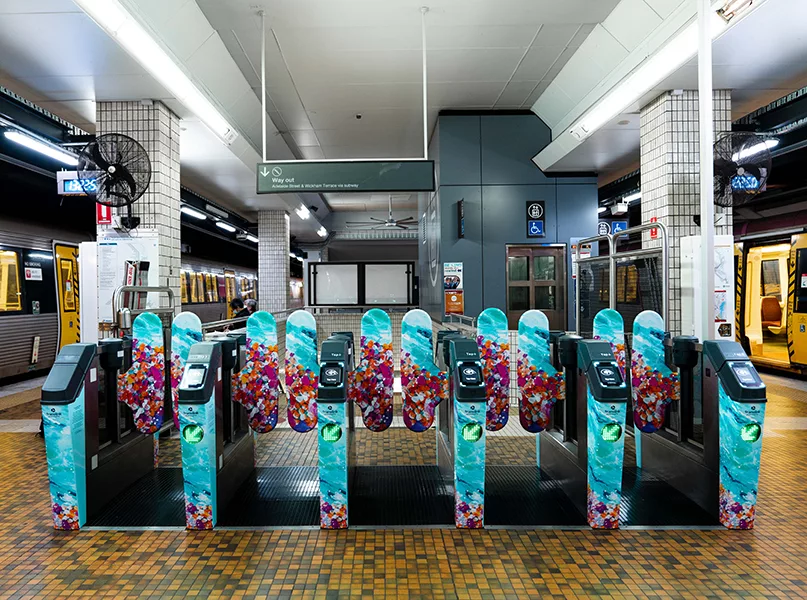
TRANSFORMATIONAL CHANGES
As the host city for the 2032 Olympic and Paralympic Games, Brisbane will see significant infrastructure development in preparation for the event.
“To support SEQ’s growing population and rail patronage demand between Brisbane, Logan, and the Gold Coast, we need to double the number of Beenleigh and Gold Coast train services over the next 20 years,” Milward divulges.
Translink has begun to implement a variety of transport improvements to achieve this goal.
Firstly, the Logan and Gold Coast Faster Rail project will remove a key bottleneck on the SEQ rail network, to allow Gold Coast express trains to easily bypass Beenleigh trains during peak periods.
Unlocking this network capacity requires duplicating tracks in both directions between Kuraby and Beenleigh, through the implementation of a wider corridor and track straightening in some areas.
As well as duplicating the number of tracks between Kuraby and Beenleigh from two to four, the project will also deliver modernised rail systems, station upgrades, and five level crossing removals to improve accessibility and safety. Park ‘n’ ride upgrades and an active transport corridor along the length of the 20km rail corridor will also be delivered through the project.
“Planning, community engagement, and procurement activities are now underway. Additionally, a dedicated accessibility reference group was established earlier this year to contribute to accessible outcomes for all transport users,” he tells us.
The Beerburrum to Nambour Rail Upgrade project will equally provide additional track capacity and reliability, and increased passenger and freight services to the growing Sunshine Coast region, north of Brisbane.
“Early works have recently been completed, and pre-construction and design activities have started on the first main stage.
“This stage will duplicate about 13km of track, address three level crossings on the alignment, expand three park ‘n’ ride facilities, and undertake associated road works. In keeping with our integrated network vision, a new bus interchange has also been built at one of the stations along the rail line,” Milward explains.
GREATER TRAVEL CHOICES
The business case for a Direct Sunshine Coast Rail Line project is underway with consultation already beginning for the Sunshine Coast Public Transport project.
“Both projects aim to enable greater travel choices for short, local, and long trips. They are designed to ease traffic congestion and improve efficiency of the broader transport network through reduced car dependence,” outlines Milward.
As the country anticipates the Brisbane 2032 Olympic and Paralympic Games, Translink will build upon its reputation for reliability and excellence.
“We look forward to building on that success as we welcome visitors to our beautiful part of the world in 2032,” Milward concludes.
